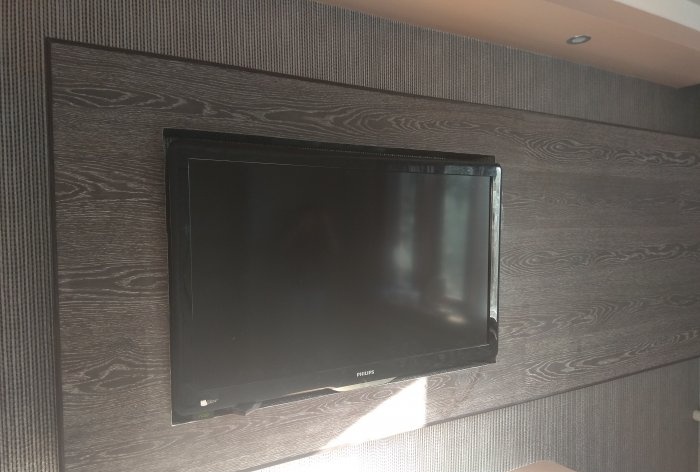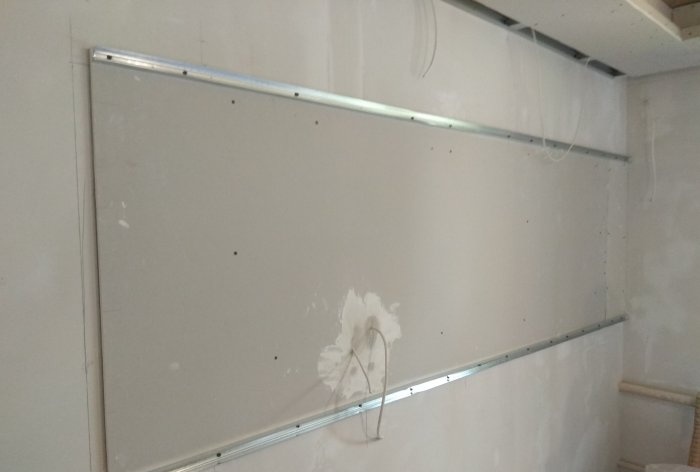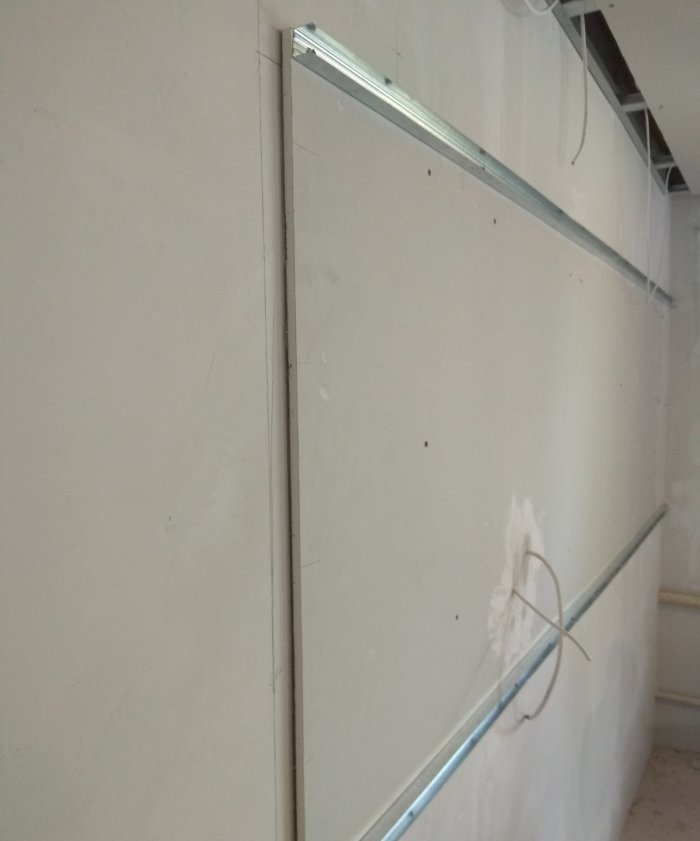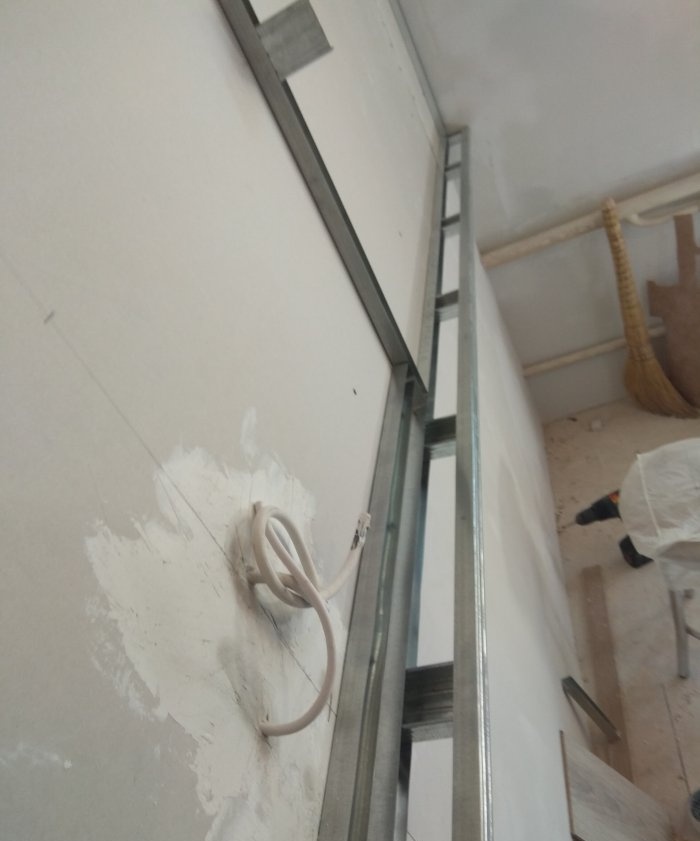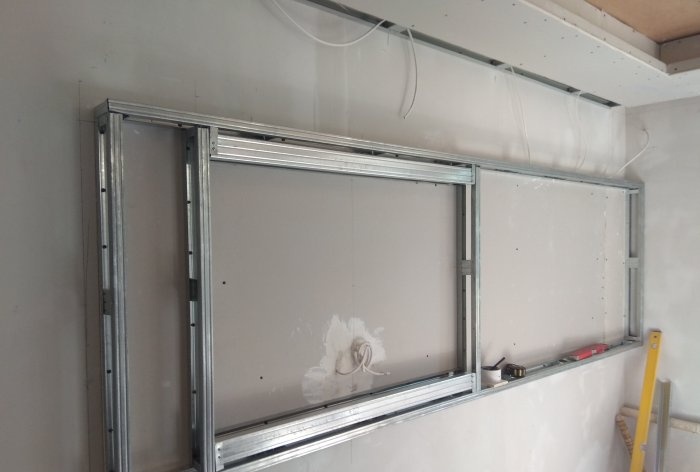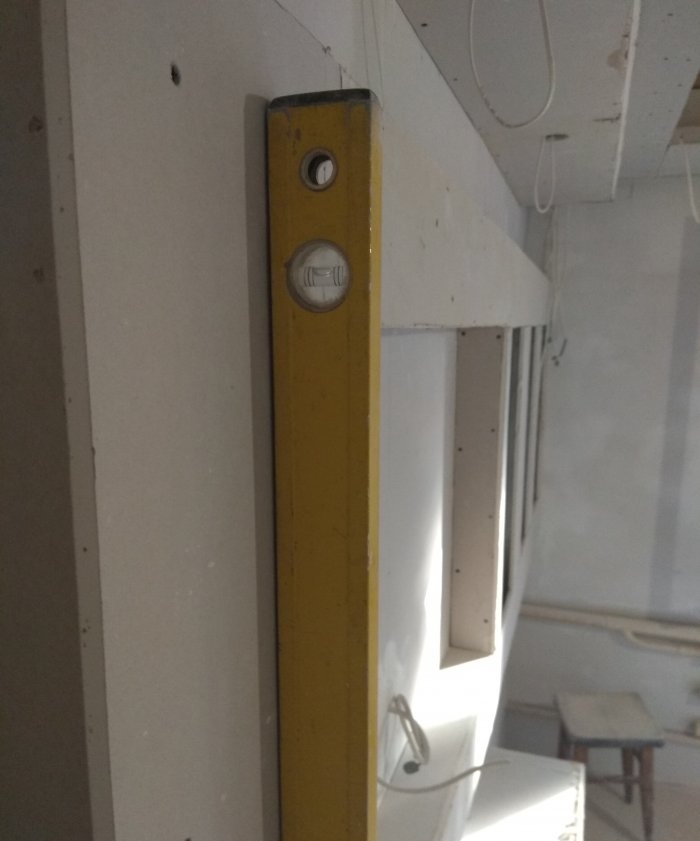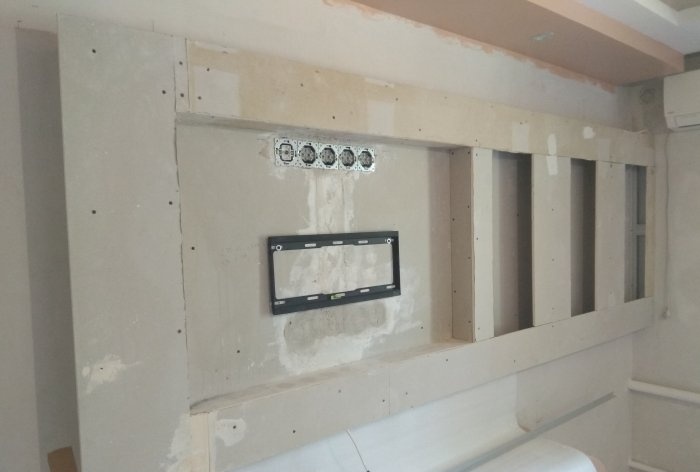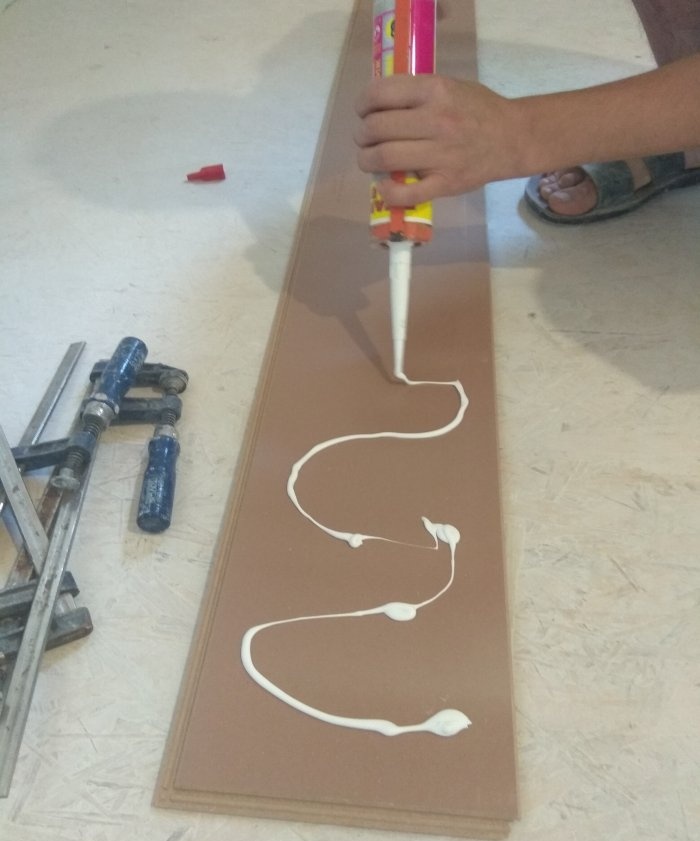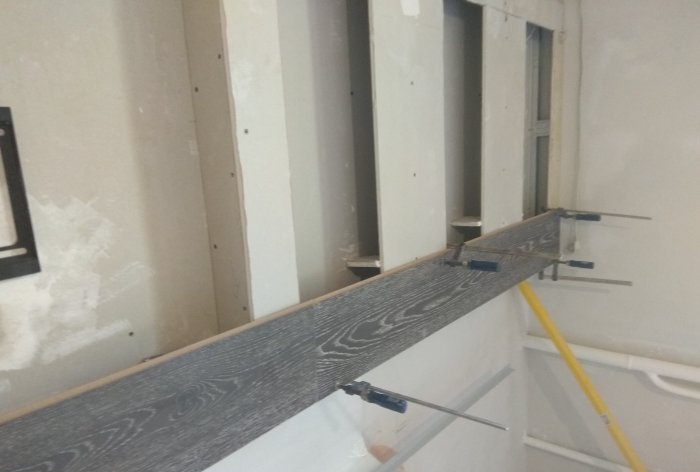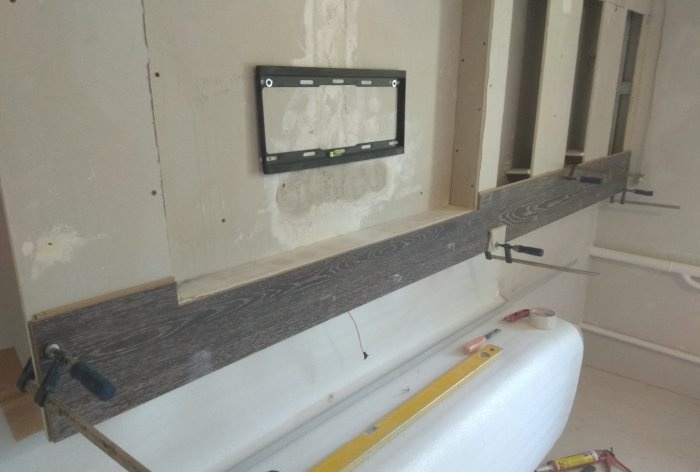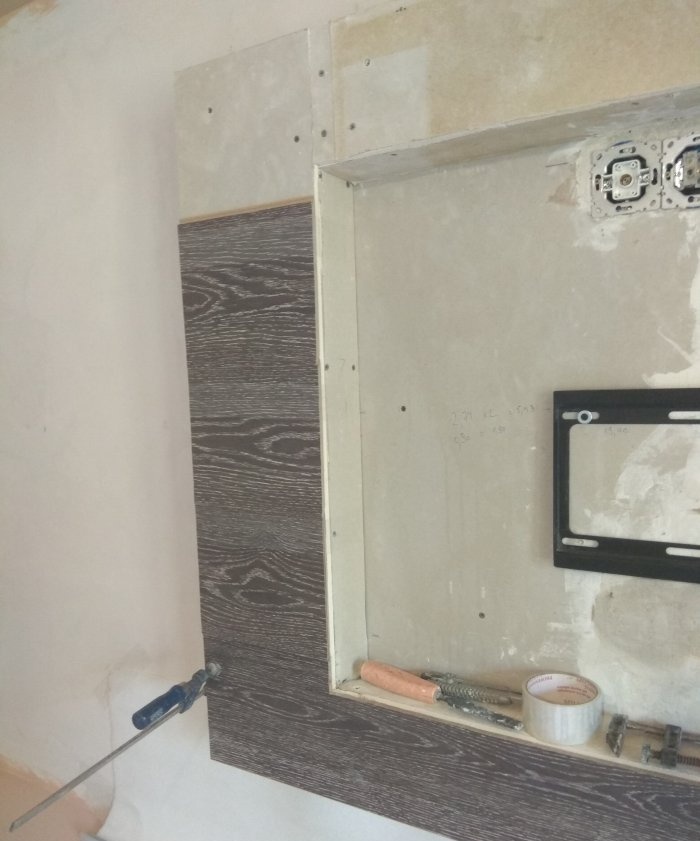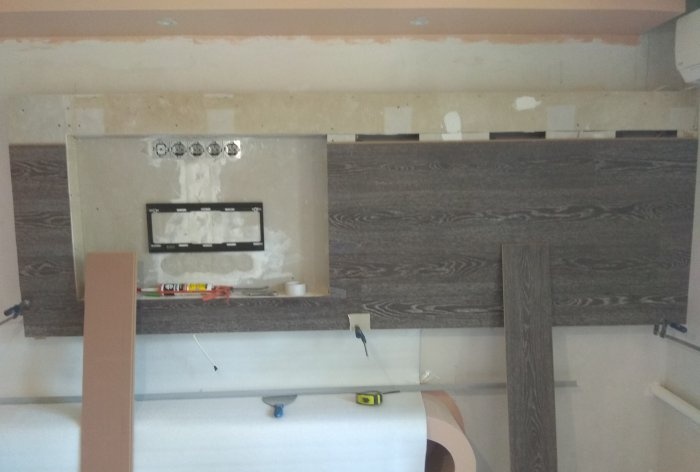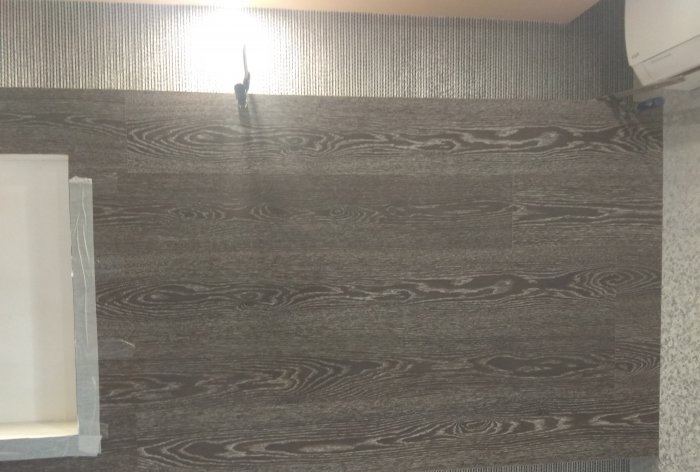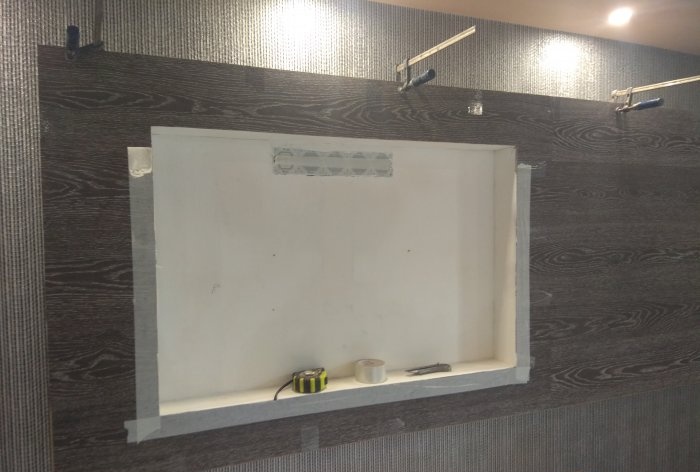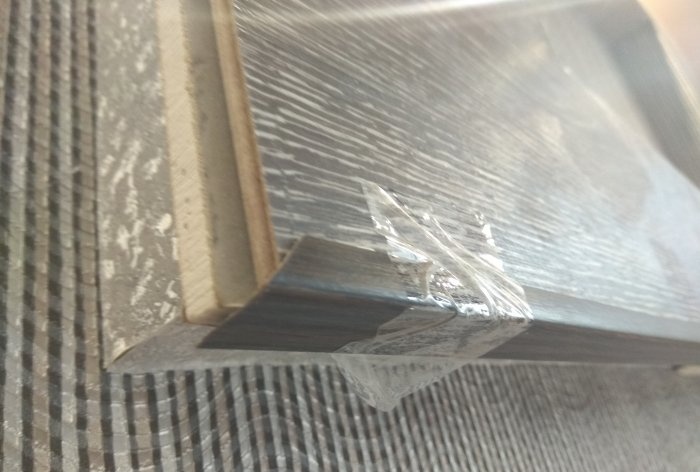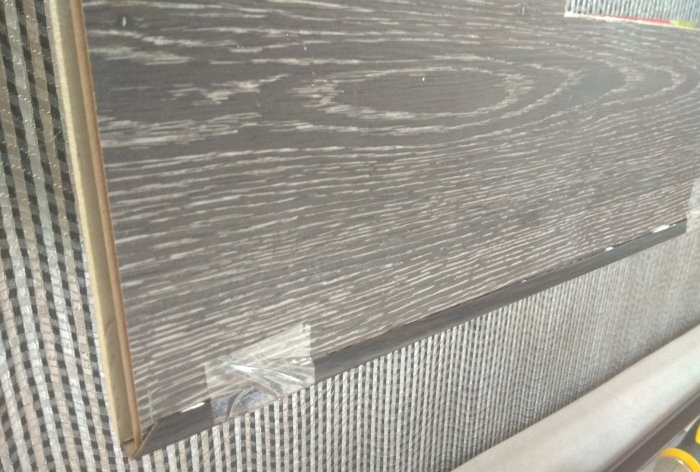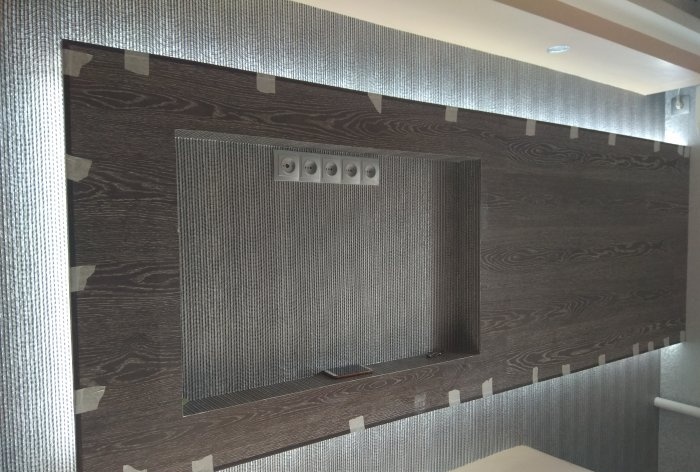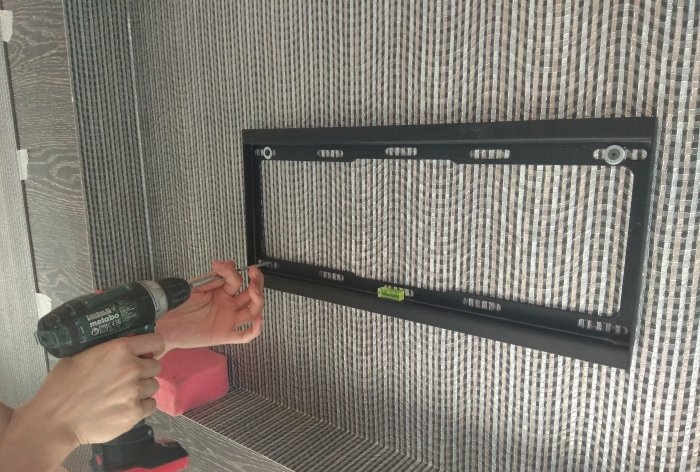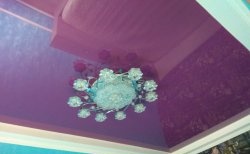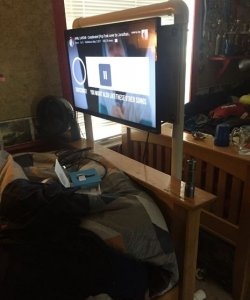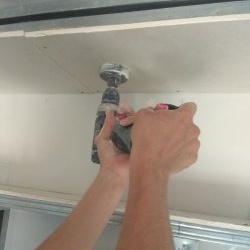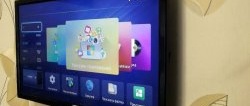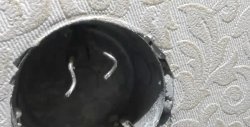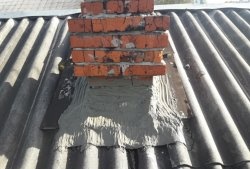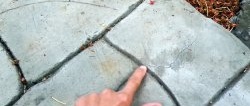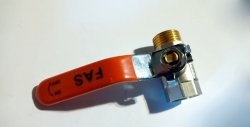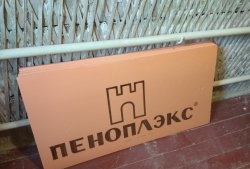There are many ways to place a TV in a room. One attractive option is to make a niche from plasterboard. This option will not only perfectly complement the design, but will also allow you to hide all the cords leading to the TV inside the box.
Making a plasterboard box
First you need to decide on the size of the niche, and also think about where it will be located. In addition, you must first carry out the electrical work. The cord must be routed into the inside of the box for installing sockets. Since the front part of the box will be lined with laminate, the width can be calculated so that the laminate does not have to be cut lengthwise. The length of the entire niche is the size of two strips of laminate, so as not to cut it across. The size of the niche is calculated exclusively for the size of the TV. Therefore, before you start assembling the box, it is important to already know which TV will be fixed inside. The thickness of the niche also depends on the thickness of the TV.
Assembly begins with the contours of the niche.To do this, you can use a UD metal profile, which is attached to the wall with self-tapping screws.
When installing the profile, it is important to adhere to a horizontal level. Next is a partition for a TV with a horizontal profile fastening.
The size of the internal niche for the TV should be 1 - 1.5 cm larger than the TV itself, so that there is a gap between them. After you have drawn the outline of the entire niche, you can begin installing the box itself. To do this, use a CD profile 10 cm long. Insert it into the groove of the UD profile with an indentation of 30 - 40 cm. On the reverse side, also fix the UD profile strip. The profile is attached to each other using LM metal screws.
On the right side of the box, two CD profiles must be fixed vertically for rigidity. After this, you can cover the sides of the niche with plasterboard. On the front side, the drywall should protrude 5 cm on all sides, and not be flush with the profile.
If you wish, you can later attach an LED strip behind the protruding drywall. On the right side, you can completely cover the box with plasterboard, or screw sections to the profile to save money.
At this point, it would be wise to hang up the TV mount and double-check that you haven't gotten the dimensions wrong. You can hang the TV to make sure it fits well into the inner box. This will also allow you to determine the exact location to install the outlets.
The next stage is lining the niche with laminate. Of course, natural wood will look rich and beautiful, but a simpler and more economical option is laminate. You can fasten the laminate using liquid nails, applying glue with a syringe to the laminate or directly to the frame.
The bottom strip is attached first.The locks must first be cut off from the side parts of the right and left laminate strips. You will need a jigsaw to trim the left side of the niche. Use clamps to securely secure the laminate to the drywall. You should not begin installing the next strips until the first bottom strip is securely fastened.
As a rule, liquid nails set quickly, so you will have to wait 15 - 20 minutes. Then you can add the laminate further.
On all laminate strips, the side seams on the left and right must be cut. When installing the top two strips of laminate, you must first cut off the top lock from them, and also secure them with clamps.
To hide the uneven cut corners of the laminate, you can also use liquid nails to fix a decorative corner to match the tone of the laminate. To fix the corner until it sticks together, use tape.
Next, in the inner part of the niche, you can putty the surface and glue the same wallpaper there as around the entire structure. It is also necessary to secure the sockets and the TV mount at a level. Then you can glue LED strip along the edges of the box on all sides. The final stage of work is fixing the TV in the mount.
